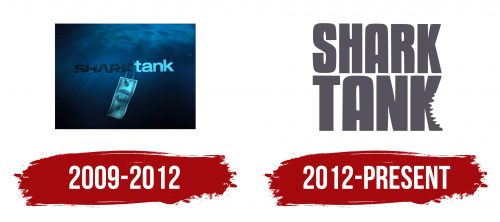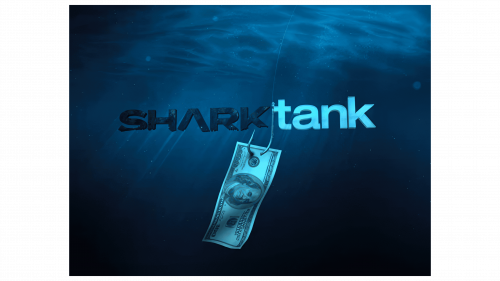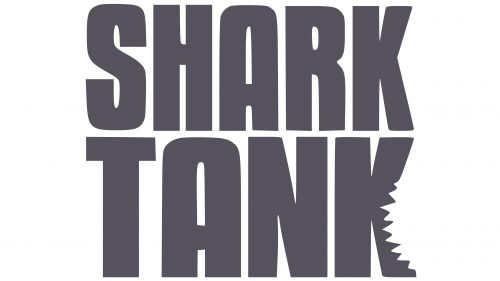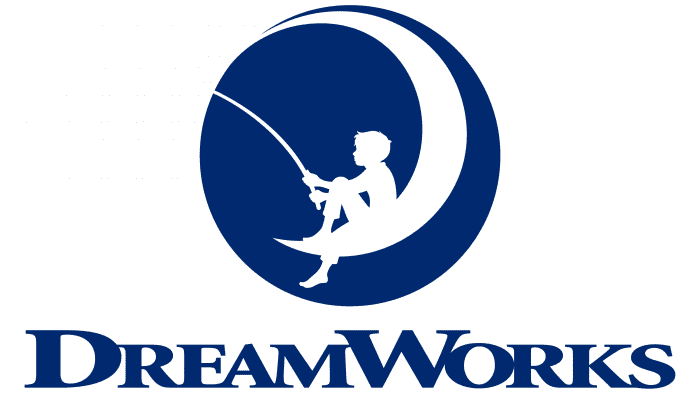The Shark Tank logo vividly symbolizes the ruthless battle for success, for that coveted “piece of the market” that only the strongest can claim. The bite mark, clearly visible on the emblem, hints that the show is a place of fierce competition, where there is no room for jokes or hesitation. One wrong move and luck will instantly fall into the hands of a more determined and faster competitor. This symbol reminds participants that achieving their dreams requires instant reactions, a drive for victory, and a clear understanding of their goals.
Shark Tank: Brand overview
The history of Shark Tank began in 2001 when the idea for a show called Money Tigers was first introduced in Japan. The format quickly gained international attention and was adapted in various countries. In 2005, the UK version, Dragons’ Den, became widely popular.
Producer Mark Burnett, known for hit reality TV shows like Survivor and The Apprentice, had the idea to create an American version of Dragons’ Den. Burnett saw the potential in a show where entrepreneurs pitch their ideas to a panel of wealthy investors.
Development of the U.S. adaptation began in 2008. Burnett and his team adjusted the format to appeal to American audiences, making the show more exciting and fast-paced. They named it Shark Tank, reflecting the fierce and competitive nature of the business world.
The show premiered on ABC on August 9, 2009. The first season, consisting of 14 episodes, introduced American viewers to entrepreneurs pitching their ideas to the panel of investors known as “sharks.” The original sharks included Daymond John, Robert Herjavec, Kevin Harrington, Barbara Corcoran, and Kevin O’Leary.
Despite the fresh concept, the first season did not attract a large audience, and the show’s future was uncertain due to low ratings. However, ABC and the producers saw the potential in the format and decided to continue with another season.
In 2010, season two brought major changes. Kevin Harrington left, and Mark Cuban joined the panel, bringing his dynamic personality and insightful feedback. The producers also improved the pitch selection, resulting in more engaging and diverse business ideas.
These changes paid off as ratings for the program started to rise. The show gained momentum, especially as success stories of entrepreneurs who secured investments from the sharks spread, further capturing audience interest.
In 2012, the program received its first Emmy nomination for Outstanding Reality Program, marking its growing recognition. Although it didn’t win that year, the nomination showed its increasing cultural relevance.
The show reached new heights in 2013, winning its first Emmy Award for Outstanding Reality Program. That year, Lori Greiner, the “Queen of QVC,” joined the sharks, adding a new dimension to the panel with her retail expertise.
As the series grew in popularity, it became a key part of American business culture. The “Shark Tank effect” emerged, where even businesses that didn’t receive investments on the show experienced massive growth after their appearance.
In 2014, the show introduced a spin-off called Beyond the Tank, which followed companies after their time on the main show. This allowed viewers to see the long-term impact of the sharks’ investments and advice on these businesses.
The series continued to innovate in 2015 by bringing in new guest sharks, including tech investors like Chris Sacca and actor Ashton Kutcher. These fresh perspectives kept the show engaging for audiences.
In 2016, the program celebrated a major milestone when the total investments made by the sharks surpassed $100 million, highlighting the show’s real-world impact on entrepreneurship.
Between 2017 and 2019, the series continued to thrive, featuring a wide range of innovative business ideas and high-profile guest investors. The show also began focusing more on social entrepreneurship, showcasing companies that addressed important social issues while being profitable.
In 2020, the series adapted to global challenges by continuing production with necessary safety measures. The show reflected the evolving business landscape by featuring companies that had adapted to or were founded in response to the changing market.
In 2021 and 2022, the show kept its format fresh by introducing themed episodes, including those featuring businesses started by veterans or recent graduates. This helped maintain viewer interest while attracting new audiences.
By 2023, the program had become one of American television’s most influential business shows. It provided entertainment and inspired countless entrepreneurs to start their businesses, cementing its role in shaping American entrepreneurship. Over the years, the show has shown its ability to adapt to changing social and business trends while maintaining its core concept. It has evolved from a show with modest ratings to a cultural phenomenon and a staple of American television.
Meaning and History
What is Shark Tank?
This popular TV show turns business investing into an entertaining spectacle, where aspiring entrepreneurs present their ideas to wealthy investors known as “sharks.” These seasoned businesspeople ask questions about the owners’ dedication, finances, and strategies, often leading to emotional and tense moments. The show offers a unique insight into the world of venture capital, where the fate of companies can change instantly. It has become a cultural phenomenon, educating viewers on business strategies and deal-making skills while providing a platform for promoting new products. The program has played a key role in launching numerous successful ventures and has quickly made some participants incredibly successful.
2009 – 2012
The reality show’s logo is symbolic, with each element filled with deep meaning. At the center of the emblem is an expanse of water, reflecting the concept of the sales market in the marketing world, often compared to an ocean. Where competition is intense, it’s referred to as a “red ocean,” while open niches are symbolized by a “blue ocean.” Young entrepreneurs dream of finding their place in this sales ocean’s waves by discovering a free and promising direction.
The show’s conditions create a closed and exclusive environment where participants have the chance to secure funding for their business development. The key to success lies in confidence, assertiveness, and the ability to present a business idea convincingly. Winning the show symbolizes transforming the difficult “red ocean” into a more favorable “blue” one, as reflected in the name and color of the “Tank” part of the logo.
Experienced investors provide funding for the show and, in return, receive a stake in the business. As the “sharks” of business, their decisions determine whether an idea will surface or sink in the competitive environment. The gray “Shark” text is connected to “Tank” by a loop featuring a banknote, symbolizing the link between investors and businesses and their role in making critical decisions.
The show’s participants can also be seen as “sharks,” fighting for the cash prize in tough competition. In this case, a successful contestant, like a predator, casts a line toward the coveted prize and pulls it in, striving to seize victory in the confined space of the show.
2012 – today
The “Shark Tank” logo looks very simple but carries a hidden meaning that reflects the essence of the program. The emblem has two lines: “Shark” on top and “Tank” below. This choice of format emphasizes the division of the show into two key components—the “sharks” (investors) and the “tank” (where entrepreneurs present their projects). The bold, heavy font creates a sense of strength and pressure, which aligns with the tough, competitive nature of the show.
The most notable detail of the visual design is the letter “K” in the word “Tank,” where part of the right leg appears to be bitten off. This element symbolizes the sharks—the investors—who are always ready to grab and profit from the best idea. The shark teeth are a direct metaphor for the fierce competition that dominates the show.
The logo’s color is gray, which adds a sense of seriousness and underscores the gravity of the program. This is tied to the fact that the show deals with real business and real money, so bright colors could detract from the essence. The gray color works here as a symbol of reliability, stability, and a businesslike approach, which fits well with the image of the investors—people making important financial decisions.
This logo successfully conveys the spirit of the show: a business world where there is always the risk of being “eaten” by a stronger competitor if you don’t show confidence and present a brilliant idea.






